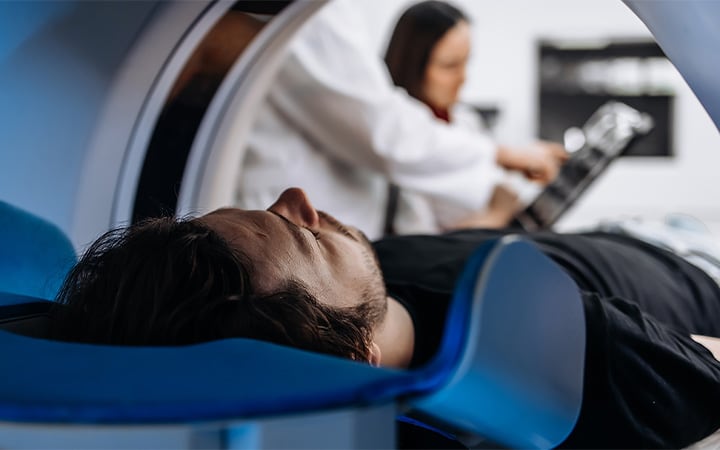Full-Body Scans for Early Disease Detection? There Are Drawbacks
September 17, 2025

It’s well known that preventive screenings such mammograms and colonoscopies save lives. But commercial full-body scans are growing in popularity and available to any person willing to pay for them. Several companies promote the screenings as a way to detect a variety of cancers and other diseases, without a doctor’s orders.
There is no evidence full-body scans are effective for people with no symptoms of disease, says University Hospitals Department of Radiology Chair Donna Plecha, MD. In fact, there are considerable downsides to undergoing these tests.
“The problem is you might pick up a lot of things that aren’t life-threatening and might cause a lot of downstream testing that isn’t necessary,” Dr. Plecha says. “That’s one of the biggest drawbacks. You might find things that aren’t worrisome, aren’t causing any problems and will never cause any problems. You’re going to end up doing more testing that isn’t necessary.”
What Do Full-Body Scans Look For?
The commercial scans, generally done with MRI, have attracted attention from the media, celebrities and influencers as a way to possibly catch early signs of disease. The scans generally are not recommended by doctors and are not covered by health insurance.
One company offers MRI scans starting at $499 to look for hundreds of conditions, including about a dozen types of cancer as well as aneurysms, fatty liver, kidney stones, diverticulitis and other problems. Prices jump into thousands of dollars for additional screening for signs of neurodegeneration, dementia, multiple sclerosis, joint disease, ACL injuries and more.
“If you scan your whole body for no reason, no symptoms and you’re not looking for anything in particular, they might find something that is worrisome and you need to take care of, but it’s highly unlikely,” Dr. Plecha says. For example, a scan could find a harmless abnormality that leads to unnecessary doctor visits, biopsy, anxiety and added expense. Scans also can produce false positives.
The best prevention strategy is to get recommended screenings. Yet many people miss out on these services. For example, only 63 percent of adults ages 45 to 75 received recommended colorectal cancer screening in 2023, according to federal data.
“There are other ways to screen for disease with less risk than full-body scans,” Dr. Plecha says.
Recommended Cancer Screenings
Preventive screenings that are proven to be effective include:
- Breast cancer: Mammograms starting at age 40.
- Cervical cancer: Pap smears starting at age 21. Co-testing for human papillomavirus (HPV) starting at age 30.
- Colon cancer: Colonoscopy starting at age 45 for people without risk factors.
- Lung cancer: Low-dose CT scan starting at age 50 for current smokers or those with history of smoking a pack a day for 20 years, or equivalent.
- Prostate cancer: Men starting around age 45 should talk to their doctor about screening with a prostate-specific antigen (PSA) test.
- Skin cancer: Yearly skin exams with a dermatologist starting at age 40.
Non-cancer Screenings
- Bone density tests: Starting at age 65 for women; earlier for those at risk of osteoporosis.
- Cholesterol: Adults should begin screening around age 20.
- Blood pressure: Routine screening starting at age 18.
- Diabetes: Blood sugar testing starting at age 35.
- Abdominal aortic aneurysm: Ultrasound screening for people at high risk, including men over 65 with a history of smoking or family history of abdominal aortic aneurysms.
Related Links
At University Hospitals Seidman Cancer Center, our care team offers the most advanced forms of cancer care, including prevention, screening, diagnosis, treatment and cancer survival support.
Whatever your age or stage of life, prevention is the best medicine. That's why it's important to see your primary care provider for age-appropriate screenings and vaccinations that can prevent disease.


